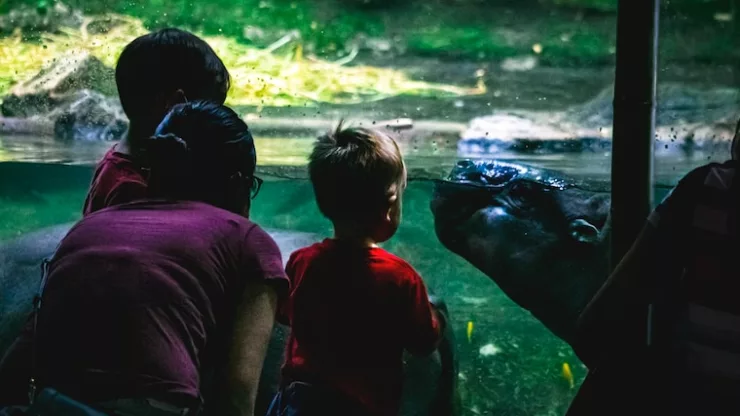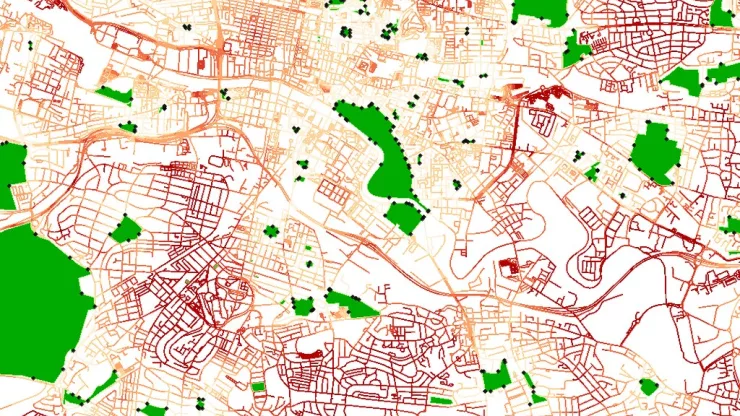Jump to Section
The Białowieża Forest: A Haven for Unique Wildlife
Nestled on the border between Poland and Belarus, the Białowieża Forest is one of the last remaining primeval forests in Europe.
The forest is home to an array of rare and endangered wildlife species, making it a unique and valuable ecosystem.
From the European bison to the lynx and the wolf, the Białowieża Forest boasts a rich biodiversity that attracts nature lovers from around the world.
However, the forest’s wildlife is under threat due to human activities, making conservation efforts more critical than ever.
Meet the European Bison, Lynx and More
The Białowieża Forest is home to several rare and endangered species, including the European bison, the lynx, and the wolf.
The European bison, also known as the Wisent, is the largest land mammal in Europe, weighing up to 1,000 kg.
In the early 20th century, the species was close to extinction, with only a handful of individuals remaining in captivity.
Thanks to conservation efforts, the population has recovered, and today, over 1,800 bison roam the Białowieża Forest.
Another iconic species of the Białowieża Forest is the lynx. The Eurasian lynx is a medium-sized cat that is native to Europe, Asia, and Siberia.
The Białowieża Forest is home to the largest population of lynx in Poland, with an estimated 50-60 individuals living in the area.
Other notable species found in the forest include the white-tailed eagle, the red deer, and the wild boar.
The Forest’s Rich Biodiversity in Peril
Despite its protected status, the biodiversity of the Białowieża Forest is under threat from human activities.
In recent years, commercial logging and infrastructure development have put pressure on the forest’s fragile ecosystem, leading to a decline in wildlife populations.
The European bison, in particular, is threatened by habitat loss and fragmentation, as well as poaching and disease.
Moreover, the Białowieża Forest is facing a new threat in the form of climate change.
Rising temperatures and changes in precipitation patterns are altering the forest’s natural cycles, affecting the growth and reproduction of plants and animals.
If left unchecked, these changes could have significant impacts on the forest’s biodiversity and the survival of its unique wildlife.
Conservation Efforts to Protect the Forest’s Wildlife
To protect the biodiversity of the Białowieża Forest, conservation efforts have been underway for several decades.
The forest is a designated UNESCO World Heritage site, and its protection is enshrined in Polish law.
In recent years, however, there has been controversy over the management of the forest, with some arguing that the government’s policy of increased logging is putting the forest’s biodiversity at risk.
Nonetheless, there are many organizations working to protect the Białowieża Forest’s wildlife.
One such organization is the European Bison Conservation Center, which is dedicated to the conservation and reintroduction of the European bison.
Other groups, such as the Białowieża National Park and WWF Poland, are working to promote sustainable tourism and raise awareness about the importance of the forest’s biodiversity.
FAQ
What other species can be found in the Białowieża Forest?
Aside from the European bison and the lynx, the Białowieża Forest is home to a variety of other wildlife species, including the wild boar, the red deer, the white-tailed eagle, the black stork, and the lesser spotted eagle, among others.
What is the best time to visit the Białowieża Forest?
The best time to visit the Białowieża Forest is during the summer months (June-August) when the weather is pleasant, and the forest is teeming with life.
However, visitors can also enjoy the forest’s beauty in the spring (April-May) and autumn (September-October), when the weather is cooler, and the foliage is changing color.
How can I support the conservation of the Białowieża Forest’s wildlife?
There are many ways to support the conservation of the Białowieża Forest’s wildlife, such as donating to conservation organizations, promoting sustainable tourism, and raising awareness about the importance of the forest’s biodiversity.
Visitors to the forest can also follow responsible tourism practices, such as staying on designated trails and minimizing their impact on the environment.
I’m a nature enthusiast and creator of Metro Wilds and have spent years exploring the great outdoors.
With a passion for environmental conservation and sustainability, I have dedicated my career to writing about the beauty and wonders of nature, as well as the threats facing our planet.
Contact me at [email protected] for assistance.





